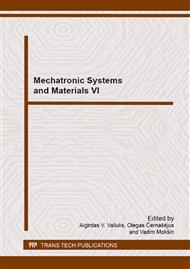p.703
p.708
p.714
p.720
p.725
p.731
p.737
p.743
p.749
The Application of the Extended Jiles-Atherton Model for Simulating the Magnetic Characteristics of X30CR13 Steel
Abstract:
The application of magnetic-property oriented methods for non-destructive testing is very promising due to its low cost and robustness. This paper presents the methodology of simulating the magnetic properties of martensitic X30Cr13 steel applying the extended Jiles-Atherton model. On the basis of experimental measurements, the parameters of the Jiles-Atherton model were determined by an evolutionary strategy together with gradient optimisation. A very good agreement between experimental hysteresis loops and the model was confirmed by a high value of determination coefficient. The presented results open new possibilities of developing methods for non-destructive testing of energetic turbines made of X30Cr13 stainless steel. Moreover, quantitative simulation gives a possibility of a better understanding of magnetisation processes.
Info:
Periodical:
Pages:
725-730
Citation:
Online since:
January 2015
Authors:
Price:
Сopyright:
© 2015 Trans Tech Publications Ltd. All Rights Reserved
Share:
Citation:


